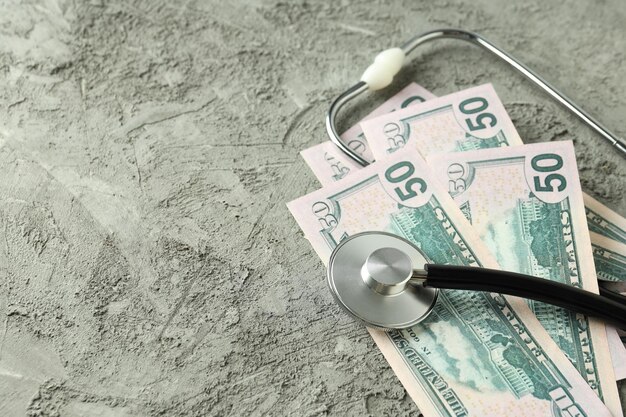Unlocking Dental Benefits: Can You Use FSA for Dental Expenses?
Navigating the intricate world of healthcare benefits can be daunting. However, understanding how to maximize your Flexible Spending Account (FSA) benefits can offer you substantial savings, especially when it comes to dental care. As more individuals seek ways to alleviate the financial burden of dental expenses, an FSA emerges as a valuable resource. This article explores various facets of using an FSA for dental services, providing a comprehensive guide to help you make informed decisions.
What is an FSA?
Before delving into its dental applications, it's essential to grasp what an FSA is. An FSA is a tax-advantaged financial account that allows you to set aside a portion of your earnings—pre-tax—to cover eligible healthcare expenses. This arrangement reduces taxable income, providing a beneficial edge during tax season.
Moreover, FSAs are often employer-sponsored and usually come with a 'use-it-or-lose-it' policy, prompting account holders to carefully plan their medical expenditures each year.
Eligibility of Dental Expenses Under FSA
What Dental Expenses are Covered?
Qualified dental expenses eligible for FSA reimbursement generally include:
- Preventive care: Routine exams and cleanings
- Treatments: Fillings, sealants, root canals
- Major procedures: Crowns, bridges, dentures
- Orthodontics: Braces or retainers
- Periodontal services: Gum treatments
Exceptions and Exclusions
While FSAs cover a broad range of dental services, certain expenses may not qualify:
- Cosmetic procedures: Teeth whitening or cosmetic veneers
- Non-medically necessary treatments: Procedures primarily for appearance enhancement
To ensure compliance, it’s recommended to check with your FSA administrator and have documentation ready—like receipts or a letter of necessity from your dentist for contentious claims.
Strategic Use of FSA for Dental Care
Planning and Budgeting
Managing your FSA effectively requires strategic planning and budgeting to avoid forfeiting unused funds. Here’s how you can leverage your FSA for dental expenses:
- Estimate annual dental costs: Use past dental bills to foresee future expenses.
- Set realistic contributions: Align your FSA contributions with predicted expenses.
- Schedule appointments wisely: Align major procedures at the year's end to avoid leftover funds.
Maximizing Orthodontic Benefits
Orthodontic treatments often span multiple years, which can complicate FSA reimbursement. To optimize FSA use for orthodontics, consider:
- Recurring billing: Seek orthodontists who offer payment plans aligning with annual FSA contributions.
- Rolling over contributions: If allowed, transfer unused FSA amounts to the next plan year for ongoing treatments.
Beyond Traditional Dentistry: Alternative Dental Services
Some FSAs also cover alternative dental healthcare expenses, such as:
- Occlusal guards: For teeth grinding (bruxism)
- Rehabilitation devices: Tongue retainers or mouth guards
- Treatment for TMJ: Temporomandibular joint dysfunction-related expenses
Assess these options carefully, as reimbursement typically requires supporting medical documentation.
Understanding IRS Guidelines and Compliance
To ensure FSA claims compliance, it's imperative to understand IRS guidelines that regulate eligible expenses:
- Document and submit all claims: Maintain receipts and proof of service.
- Comply with the plan's submission deadlines: Avoid losing reimbursement eligibility due to administrative neglect.
Common Misconceptions and Realities
Misconception: All dental expenses are covered by FSAs.
Reality: Only medically necessary treatments qualify. Cosmetic procedures are generally excluded unless they support structural integrity or result from an accident.
Misconception: Unused FSA funds can be carried over indefinitely.
Reality: Most FSAs operate under a 'use-it-or-lose-it' policy, although some accounts might allow a small year-end rollover or a grace period.
Tips for Tracking and Claiming
Record Keeping and Claim Submission
- Organize documentation: Use apps or digital tools to maintain a clear record of expenses.
- Understand the submission process: Familiarize yourself with your FSA provider's claim submission procedure to ensure faster reimbursements.
The Role of Communication
Keeping an open line of communication with both your dental care provider and FSA administrator can prevent miscommunications and ensure your benefits are used effectively. Be transparent about your FSA needs and seek their guidance when necessary.
Visual Summary: Key Steps to Optimize Your FSA for Dental Care
Here’s a concise list of strategies to maximize FSA benefits for dental expenses:
- 🔍 Assess Needs: Start by estimating your expected dental expenses for the year.
- 💡 Plan Contributions: Align your FSA contributions based on estimated costs.
- 📅 Schedule Intelligently: Book dental treatments strategically within the FSA period.
- 🔗 Utilize Orthodontic Plans: Leverage orthodontic payment plans under the FSA rules.
- 📂 Document Diligently: Keep all bills and communications for hassle-free claims.
- 🗨️ Communicate Effectively: Stay in touch with providers and FSA administrators.
Navigating Future Changes and Trends
Adapting to Regulatory Changes
Stay informed about regulatory changes in FSA policies, as these may impact the scope of coverage or the scale of contributions allowed. Adapting promptly ensures continuous optimization of your benefits.
The Rise of Digital Tools
Incorporate digital tools and apps designed for efficient tracking and managing of FSA-redeemable expenses, enhancing user-administrative interactions.
Looking Ahead
In recent years, there has been a growing emphasis on dental healthcare's preventive aspect within FSA plans. Such trends indicate a potential extension in eligible services, encouraging comprehensive dental care coverage.
By understanding how to effectively utilize your FSA for dental expenses, navigating the complexities of dental healthcare payments becomes significantly more manageable. Armed with informed strategies, you can ensure that the financial burden of necessary dental treatments is alleviated, allowing you to maintain robust oral health without compromising your budget.
